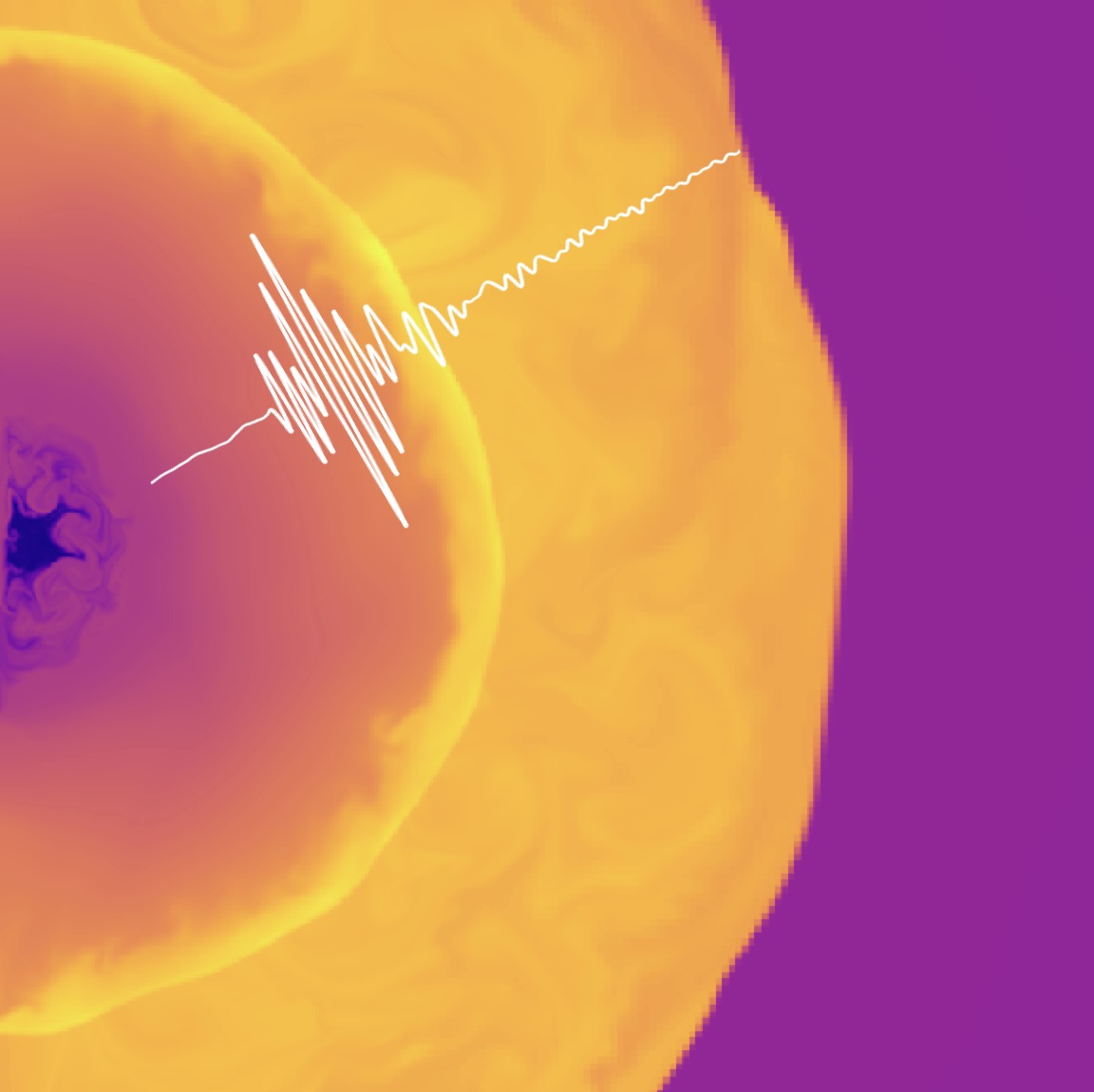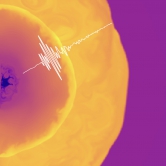CUHK
News Centre
Gravitational Waves can Show When Core of Dying Star Breaks Down into Free Quarks Helping Astronomers Explore the Origin of Life
The quantum chromodynamics (QCD) phase transition in core-collapse supernovae has been examined for the first time, using state-of-the-art multi-dimensional supernova simulations and unique imprints of such a phase transition on the emitted gravitational-wave and neutrino signals have been detected. The findings have been reported in a paper jointly authored by Professor Ming-chung Chu and Dr. Lap-Ming Lin from The Chinese University of Hong Kong (CUHK), Dr. Shuai Zha (CUHK PhD 2019) and Professor Evan O’Connor from Stockholm University, and Professor Sean M. Couch from Michigan State University. It was recently published and selected as Editors’ Suggestion in the Physical Review Letters, a top physics journal.
Ancient Chinese were among the first to observe and record supernova events. The famous “SN 1054” was recorded as a guest star (天官客星), visible with the naked eye during the daytime, in the History of Song Dynasty (宋史) during the Songrenzong (宋仁宗) era. It was a “guest” star as it appeared in the sky for just about two years. It was also called an “evil” star that’s believed to cause chaos. Only a century ago did people start to know that supernovae are the violent explosions of massive stars, which are about 1027 times more powerful than a typical nuclear bomb. However, why they explode and what powers such spectacular explosions have remained a puzzle to astrophysicists after several decades of intensive study.
Scientists generally believe that one answer may lie in the energy released when protons and neutrons in the stellar core break down into their components called quarks and gluons. This transformation is dubbed the QCD phase transition. In the paper, the researchers reported unique imprints of the QCD phase transition on the emitted gravitational-wave and neutrino signals, showing that gravitational waves and neutrinos can become potentially new and powerful probes of the supernova cores since they are generated in the stellar core and can penetrate matter with ease. The breaking down of protons and neutrons to quarks in the stellar core provides a viable engine to trigger the explosion. Distinguishable and new features of the emitted gravitational waves, such as high frequencies (~3,000 Hz), large amplitudes, and short duration (less than 5 ms), emerge as a result of the QCD phase transition in the supernova core.
The supernova deaths are important for the births of stars and planets. The explosions spread the heavy elements produced in stars, such as carbon and iron, out to the interstellar medium, and these ashes are the raw materials of the next generation of stars (such as the Sun) and planets (such as Earth).
“We are all star dust, and it is human nature to wonder where we are from. The study of supernovae is a crucial step towards finding our origin,” says Professor Chu. “If we are so fortunate as to observe the next supernova, remember this is the death of a star and the birth of a new world, and perhaps it was made possible by the meltdown of protons and neutrons into quarks and gluons.”
Future detection of such a gravitational-wave signal, coincident with a burst of neutrinos, will provide strong evidence for the transformation of supernova core matter into quarks and gluons. Such detection will greatly promote astronomers’ understanding of supernovae.



